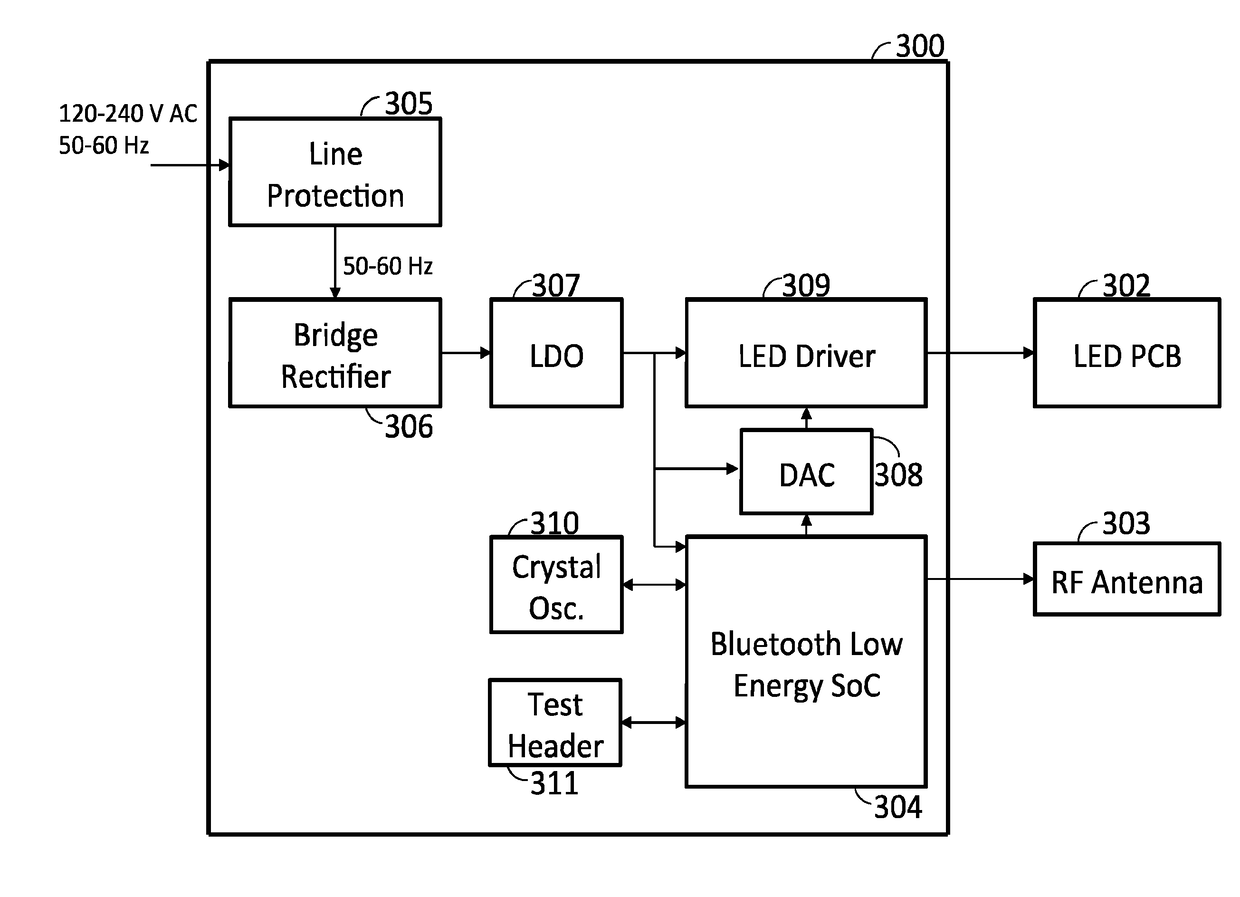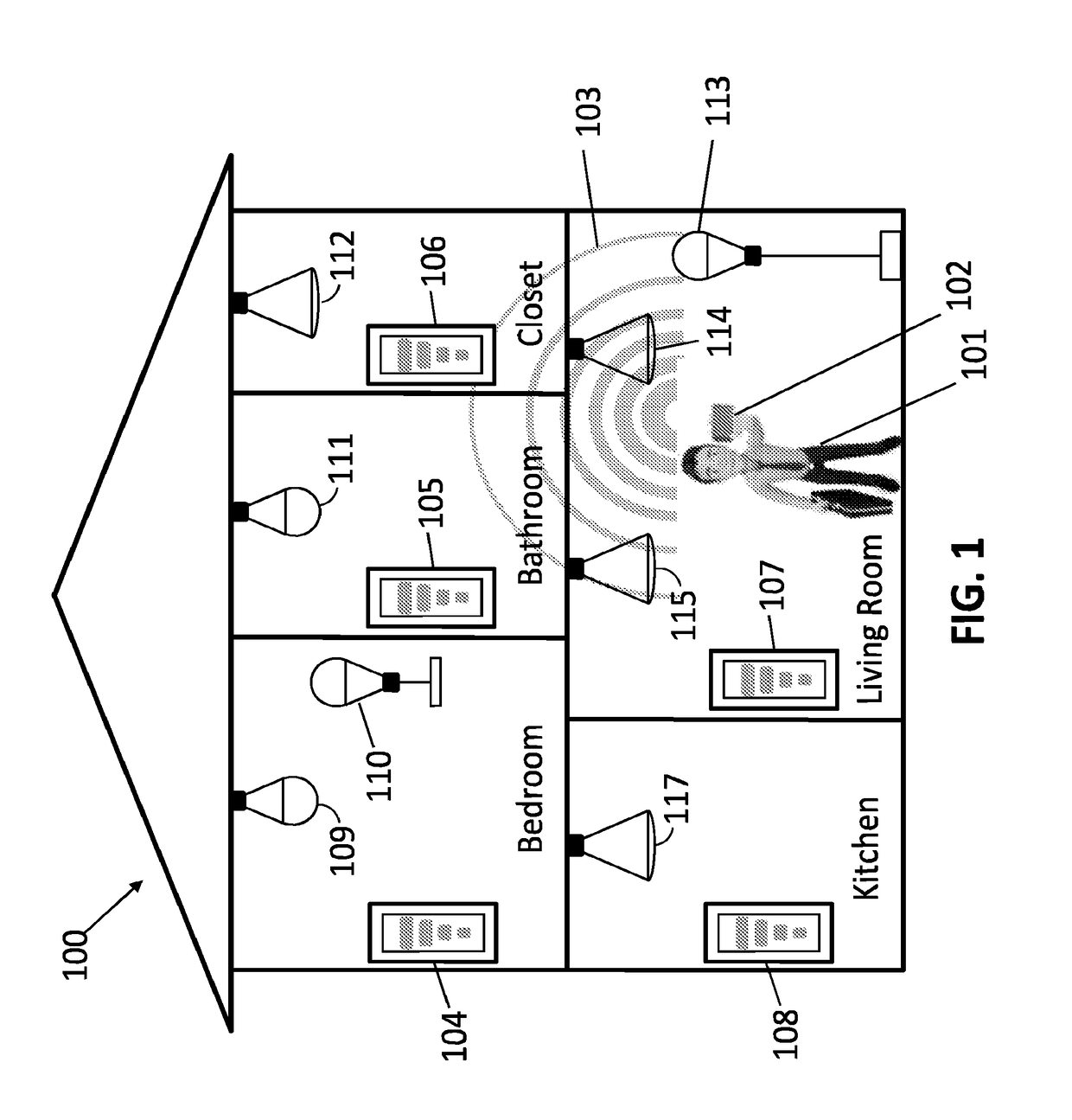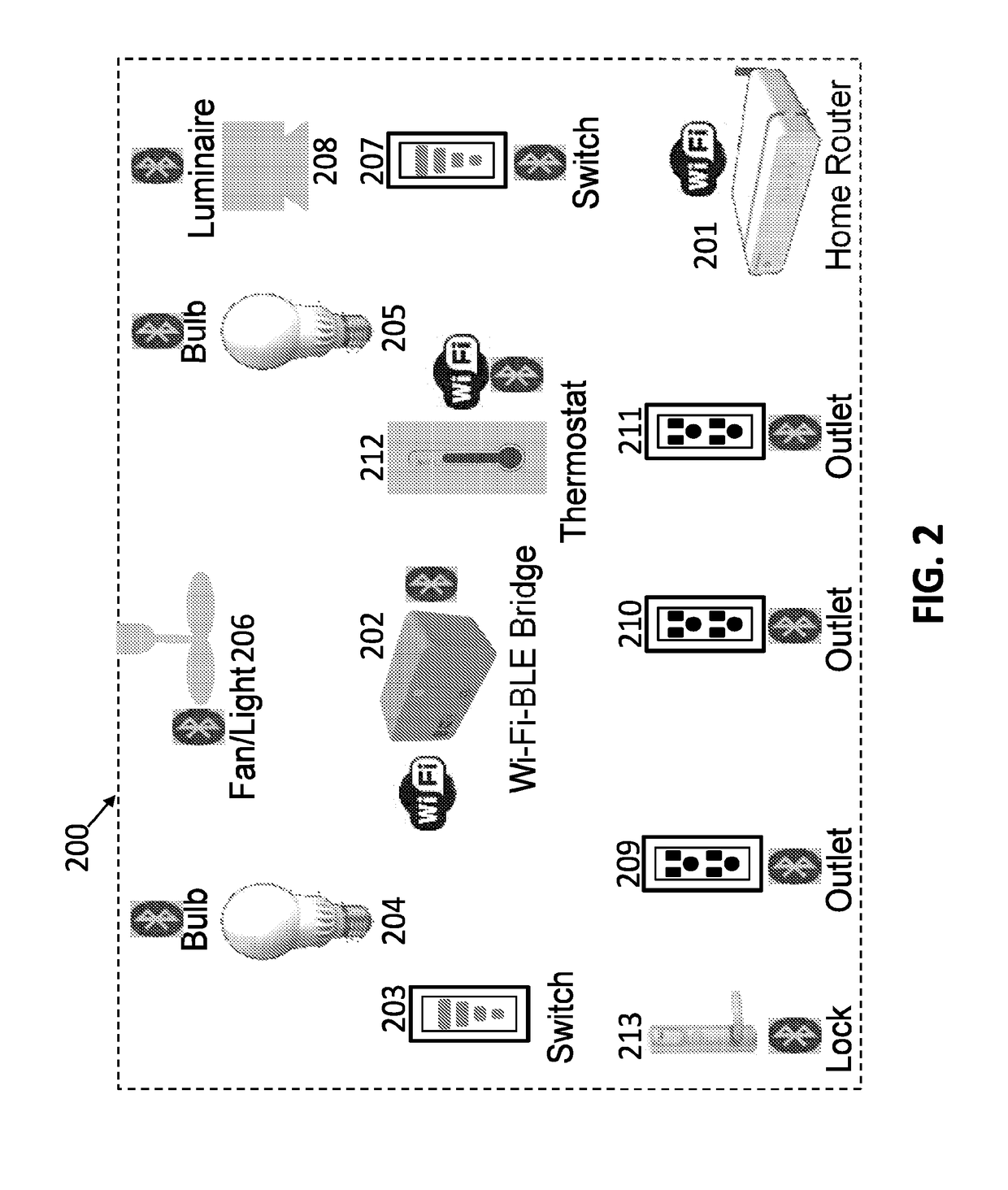Adaptive home and commercial automation devices, methods and systems based on the proximity of controlling elements
a technology of home and commercial automation and proximity control, applied in the direction of computer control, instruments, wireless commuication services, etc., can solve the problems of wi-fi or ethernet network administration, expensive proprietary hardware and software, complicated setup and maintenance, etc., and achieve low cost, minimal additional cost, substantial feature and user benefits
- Summary
- Abstract
- Description
- Claims
- Application Information
AI Technical Summary
Benefits of technology
Problems solved by technology
Method used
Image
Examples
operational example
[0219]Referring to FIG. 12, the alternate SHOL approach is taken, where more intelligence is applied to the problem, with an understanding of the user needs, and the typical spatial layout of a household. In the following example, the topology configuration decisions are made by the UC, acting as the centralized administrator. It is the UC that can discover and activate the additional capabilities of the (dual mode) MUSA devices. This functionality, combined with additional connectivity rules, form the basis of the Smart Home Overlay (SHOL) protocol.
[0220]In the event that no UC is present, the MUSA and Slave Devices operate autonomously. If there is a UC present, it will take control of the configuration of the available in range devices. In the event more than one UC is present, the UCs will coordinate to determine which UC should control which (sub-)set of devices, based on a variety of rules.
[0221]In the case a new (but authorized) UC attempts to join / configure a network of smar...
PUM
 Login to View More
Login to View More Abstract
Description
Claims
Application Information
 Login to View More
Login to View More - R&D
- Intellectual Property
- Life Sciences
- Materials
- Tech Scout
- Unparalleled Data Quality
- Higher Quality Content
- 60% Fewer Hallucinations
Browse by: Latest US Patents, China's latest patents, Technical Efficacy Thesaurus, Application Domain, Technology Topic, Popular Technical Reports.
© 2025 PatSnap. All rights reserved.Legal|Privacy policy|Modern Slavery Act Transparency Statement|Sitemap|About US| Contact US: help@patsnap.com



